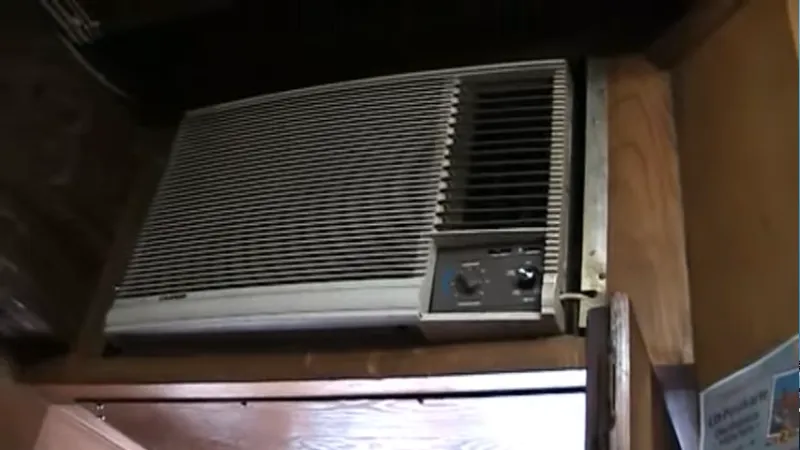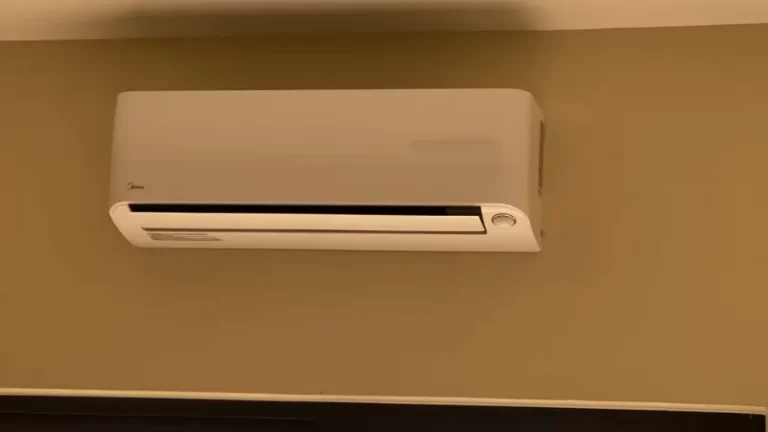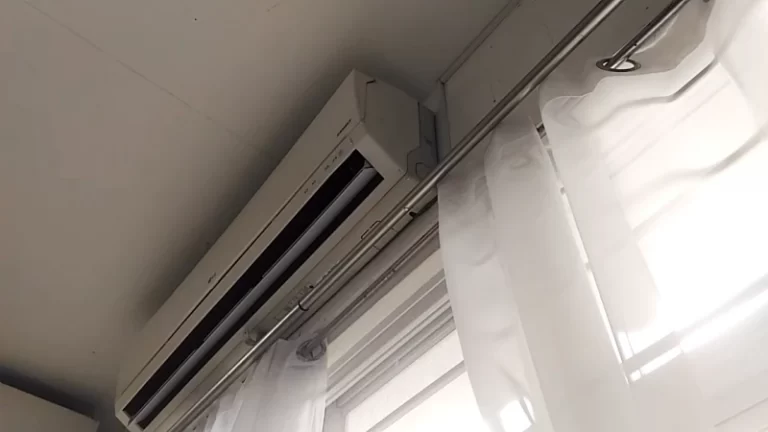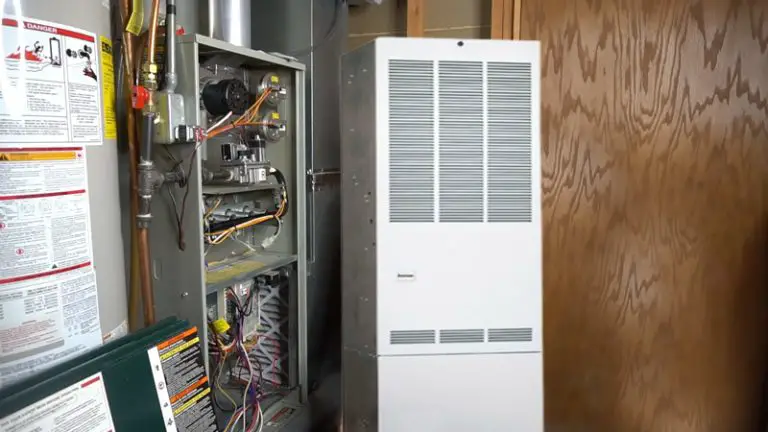Old Carrier Through the Wall Air Conditioner Worths? [Pros, Cons, Tips]

Carrier PTAC (Through The Wall Air Conditioner) is a type of air conditioning unit that was popular in the past for its efficient operation and ability to provide zoned heating and cooling for commercial applications. This blog aims to provide an overview of the old Carrier PTAC unit, including its history, advantages and disadvantages, and the best options for replacing it. The purpose of this blog is to inform those who are considering replacing their old Carrier PTAC unit, by providing relevant information and recommendations for choosing the best air conditioning solution.
You'll Learn About
The History of Carrier Ptac Units
The history of Carrier PTAC (Through The Wall Air Conditioner) units can be traced back to the origin of the Carrier Corporation. Carrier Corporation is a leading manufacturer of air conditioning units, and it has been a pioneer in the industry since its inception.
Through The Wall air conditioners were introduced by Carrier Corporation as a solution for zoned heating and cooling in commercial applications. The popularity of Carrier PTAC units grew quickly due to their efficient operation and ability to provide customized heating and cooling for specific areas.
This section of the blog will provide a comprehensive look at the history of Carrier PTAC units, from their origin to their rise in popularity.
Advantages and Disadvantages of Old Carrier Ptac Units
Advantages of Old Carrier Ptac Units
Zoned Heating and Cooling
One of the major advantages of old Carrier PTAC units is their ability to provide zoned heating and cooling, which means they can be used to control the temperature in specific areas. This is especially useful in commercial applications where different areas may require different temperatures.
Efficient Operation
Old Carrier PTAC units were known for their efficient operation, which was a major selling point in their time. They were designed to operate with minimal energy consumption, making them a cost-effective option for businesses and other commercial applications.
Commercial Applications
Carrier PTAC units were specifically designed for commercial applications, making them an ideal solution for businesses that required zoned heating and cooling. This included hotels, motels, offices, and other similar buildings.
Disadvantages of Old Carrier Ptac Units
Limited Coverage
One of the major disadvantages of old Carrier PTAC units is their limited coverage area. They are designed for use in commercial applications and may not be suitable for larger buildings or homes.
Energy Consumption
While old Carrier PTAC units were designed to operate efficiently, they may still consume a significant amount of energy compared to modern air conditioning units. This can be a concern for businesses and other commercial applications that are looking to reduce their energy consumption.
Maintenance and Repair
Old Carrier PTAC units may require more maintenance and repairs compared to modern air conditioning units. This can be a significant concern for businesses and other commercial applications that need to ensure that their air conditioning units are always operational.
while old Carrier PTAC units have several advantages, including zoned heating and cooling, efficient operation, and commercial applications, they also have several disadvantages, including limited coverage, energy consumption, and the need for maintenance and repairs. These factors should be considered when deciding whether to replace an old Carrier PTAC unit with a newer model.
Replacing an Old Carrier Ptac Unit
Direct Replacement
A direct replacement for an old Carrier PTAC unit is a new air conditioning unit that is designed to fit into the existing wall sleeve and electrical connection. This is a popular option for businesses and other commercial applications that want to replace their old Carrier PTAC unit with a newer, more efficient model.
Benefits of Upgrading
Upgrading to a newer air conditioning unit has several benefits, including improved energy efficiency, better coverage, and reduced maintenance and repair costs. Upgrading to a newer model will also provide improved control over the temperature and air quality, making it an ideal solution for businesses and other commercial applications that require zoned heating and cooling.
Cost of Replacing a Carrier Ptac Unit
The cost of replacing an old Carrier PTAC unit will vary depending on the specific unit, the size of the building, and the complexity of the installation. On average, the cost of replacing a Carrier PTAC unit can range from a few hundred dollars to several thousand dollars. This cost should be taken into consideration when deciding whether to replace an old Carrier PTAC unit with a newer model.
replacing an old Carrier PTAC unit is a viable option for businesses and other commercial applications that are looking to improve the efficiency and effectiveness of their air conditioning system. A direct replacement is a popular option, and upgrading to a newer model provides several benefits, including improved energy efficiency, better coverage, and reduced maintenance and repair costs. The cost of replacing a Carrier PTAC unit should also be taken into consideration when making the decision to replace an old unit with a newer model.
Best Options for Replacing an Old Carrier Ptac Unit
Comparison of Different Brands
When it comes to replacing an old Carrier PTAC unit, there are many different brands to choose from. Some of the most popular brands include Fujitsu, LG, and Friedrich. Each of these brands has its own unique features, benefits, and disadvantages, so it is important to compare them before making a decision.
Some factors to consider when comparing different brands include price, energy efficiency, noise level, and customer reviews.
Recommendations for Best Through the Wall Air Conditioners
Based on research and customer reviews, some of the best options for replacing an old Carrier PTAC unit include the Fujitsu Halcyon, the LG LP0817WSR, and the Friedrich Chill CP06G10B Window Air Conditioner. These units are known for their energy efficiency, quiet operation, and high-quality performance. Additionally, they are also affordable and easy to install, making them ideal options for businesses and other commercial applications.
Energy Efficiency and Noise Level
When choosing a new air conditioning unit to replace an old Carrier PTAC unit, it is important to consider both energy efficiency and noise level. Energy efficiency is important because it will help to reduce energy bills and contribute to a more sustainable environment.
On the other hand, noise level is important because it can affect the comfort and productivity of those who are inside the building. When comparing different air conditioning units, look for units that are Energy Star certified, as these units are designed to be more energy efficient and quiet than other units.
there are many different options available for replacing an old Carrier PTAC unit. When choosing a new unit, it is important to consider factors such as price, energy efficiency, noise level, and customer reviews.
Some of the best options for replacing an old Carrier PTAC unit include the Fujitsu Halcyon, the LG LP0817WSR, and the Friedrich Chill CP06G10B Window Air Conditioner. Additionally, it is important to choose a unit that is both energy efficient and quiet, as these features will help to improve the overall comfort and efficiency of the air conditioning system.
Tips for Maintaining and Extending the Life of Your Old Carrier Ptac Unit
Regular Cleaning
Regular cleaning of your old Carrier PTAC unit is crucial to keep it running smoothly and extend its lifespan. Dust and debris can accumulate in the unit over time, reducing its efficiency and leading to breakdowns. Clean the unit’s exterior and interior, as well as the filters, at least once a year.
Proper Ventilation
Proper ventilation is crucial to keep your old Carrier PTAC unit running smoothly. Make sure that the air vents and ducts are not blocked and that the unit has adequate ventilation to allow the air to circulate properly.
Professional Maintenance
Regular professional maintenance is critical to keep your old Carrier PTAC unit functioning optimally. A professional HVAC technician can perform routine inspections, clean the unit, and repair any problems before they escalate into major issues.
Upgrade to a Modern Thermostat
Upgrading to a modern thermostat can help you better control your old Carrier PTAC unit and improve its efficiency. A programmable thermostat can help you regulate the temperature in your room, ensuring that the unit runs only when it is needed and reducing energy consumption.
Insulate Your Room
Insulating your room can help you save energy and reduce the workload of your old Carrier PTAC unit. Insulating your room can help reduce the amount of heat that enters or escapes, making it easier for your unit to maintain a comfortable temperature.
By following these tips, you can help maintain and extend the life of your old Carrier PTAC unit. Regular cleaning, proper ventilation, professional maintenance, upgrading to a modern thermostat, and insulating your room can all contribute to the longevity and efficiency of your unit.
Comparison of Old Carrier PTAC Unit with Modern Through The Wall Air Conditioners
| Feature | Old Carrier PTAC Unit | Modern Through The Wall Air Conditioners |
|---|---|---|
| Energy Efficiency | Average | High |
| Noise Level | Loud | Low |
| Maintenance and Repair | Regular | Minimal |
| Coverage | Limited | Wide |
| Cost of Replacing Unit | Affordable | Costly |
| Zoned Heating and Cooling | Yes | Yes |
| Adaptability to Commercial Applications | Good | Better |
The above table provides a comparison of the features of an old Carrier PTAC unit with modern through the wall air conditioners. In terms of energy efficiency, old Carrier PTAC units have an average efficiency rating, while modern units are highly efficient.
The noise level of old Carrier PTAC units is loud compared to the low noise level of modern units. Maintenance and repair for old Carrier PTAC units are regular, while modern units require minimal maintenance.
Old Carrier PTAC units have limited coverage, while modern units have wide coverage. The cost of replacing an old Carrier PTAC unit is affordable, while modern units are costly. Both old Carrier PTAC units and modern through the wall air conditioners offer zoned heating and cooling solutions and adapt well to commercial applications.
However, modern units offer better adaptability to commercial applications compared to old Carrier PTAC units.
What is a Carrier Ptac Unit?
Carrier PTAC (Packaged Terminal Air Conditioner) units are through-the-wall air conditioning and heating systems designed for commercial and institutional use. They provide zoned heating and cooling solutions and are often found in hotels, motels, apartments, and nursing homes.
PTAC units are designed to fit into a wall sleeve and be mounted through an exterior wall, thus providing a more secure and permanent installation compared to portable air conditioners.
How Does a Carrier Ptac Unit Work?
A Carrier PTAC unit consists of an air conditioner, a heater, and a fan. When the unit is turned on, the refrigerant inside the unit is compressed, creating heat.
This heat is then expelled outside the building through a condenser coil. The indoor coil absorbs heat from the room, causing the refrigerant inside to evaporate and cool the air. This cooled air is then distributed into the room by the fan.
During the heating cycle, the heat pump reverses its operation, drawing heat from outside and distributing it into the room.
How Much Does It Cost to Replace a Carrier Ptac Unit?
The cost of replacing a Carrier PTAC unit can vary depending on several factors, including the size of the unit, the type of unit, the location, and the installation costs.
On average, a new Carrier PTAC unit can cost anywhere from $1,000 to $3,000. Installation costs can also vary, with some installations requiring additional electrical and ductwork, which can drive up the overall cost.
What Are the Benefits of Upgrading to a Newer Carrier Ptac Unit?
Upgrading to a newer Carrier PTAC unit can provide several benefits, including improved energy efficiency, improved performance, and increased reliability.
Newer units often have more advanced technology, such as digital controls and programmable thermostats, that can improve the overall efficiency of the unit. Additionally, newer units are often more reliable, meaning fewer maintenance and repair needs, and less downtime.
What Should Be Considered When Choosing a Replacement Carrier Ptac Unit?
When choosing a replacement Carrier PTAC unit, there are several important factors to consider, including energy efficiency, noise level, and coverage area.
Energy efficiency is an important factor to consider because it can have a significant impact on the monthly energy bills. A unit with a high SEER (Seasonal Energy Efficiency Ratio) rating will use less energy, saving money in the long run.
The noise level of the unit is also important, especially in commercial settings where a quiet operation is preferred. Finally, the coverage area of the unit should also be considered, as a unit that is too small will struggle to cool a larger area, and a unit that is too large will be less efficient and more expensive to operate.
Old Carrier Through the Wall Air Conditioner: Is It Worth It?
Carrier’s through-the-wall air conditioners are known for their durability and reliability. These units are ideal for homes that lack central air systems, providing a cost-effective cooling solution. However, their performance can vary depending on the model and age of the unit. It’s essential to consider the age of your system before making a purchase decision.
To maximize the efficiency of your air conditioning system, it’s important to maintain it properly. If you notice issues, such as your system not cooling properly, consider routine checks. If the air quality is affecting your home, consider installing an American Air Purger to improve overall comfort.
Conclusion
Old Carrier PTAC units have a long history of providing efficient heating and cooling solutions for commercial applications. While these units have many advantages, such as their zoned heating and cooling capabilities, they also have some disadvantages, including limited coverage and higher energy consumption.
When it comes time to replace an old Carrier PTAC unit, there are many different options available, including direct replacements, energy-efficient units, and units with low noise levels. Ultimately, the best option will depend on the specific needs and budget of the individual or business.
As we move forward, it is recommended to consider the most energy-efficient and environmentally friendly options for future air conditioning needs. By doing so, we can help to reduce our carbon footprint and promote a more sustainable future.




